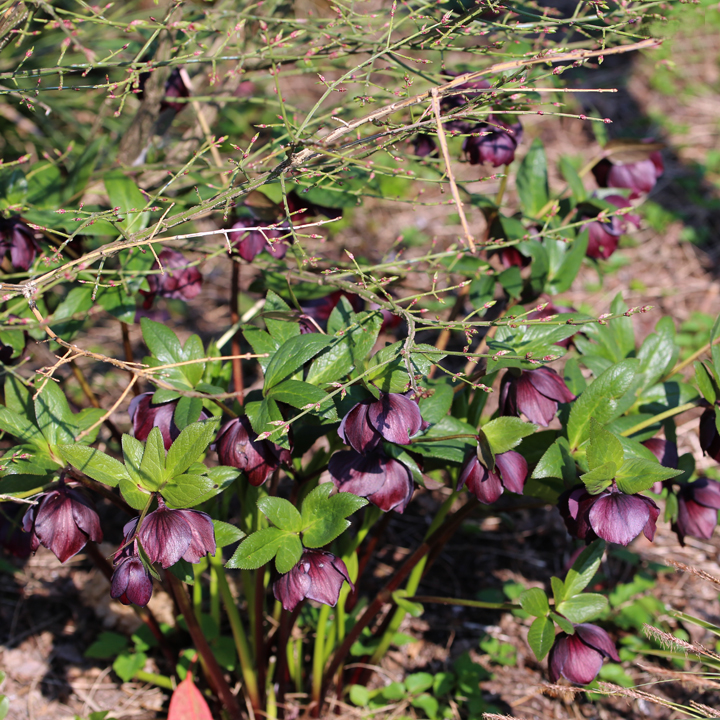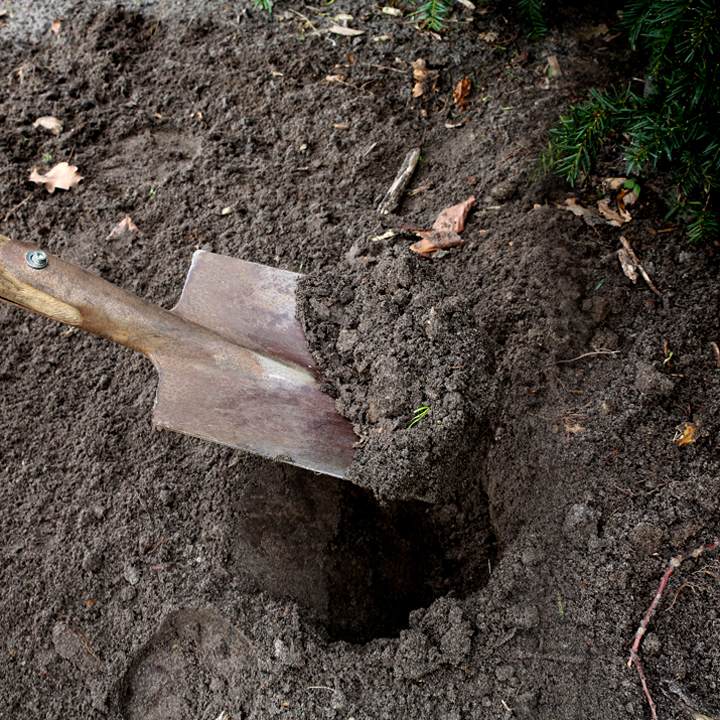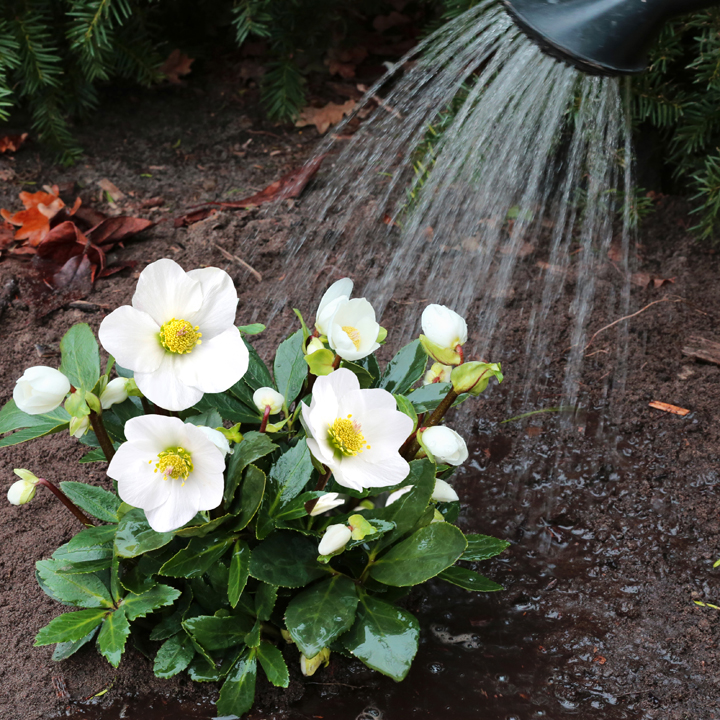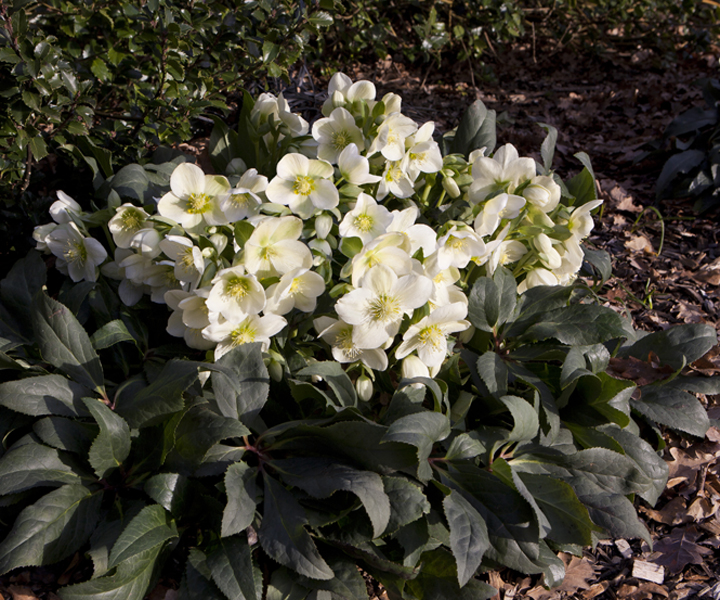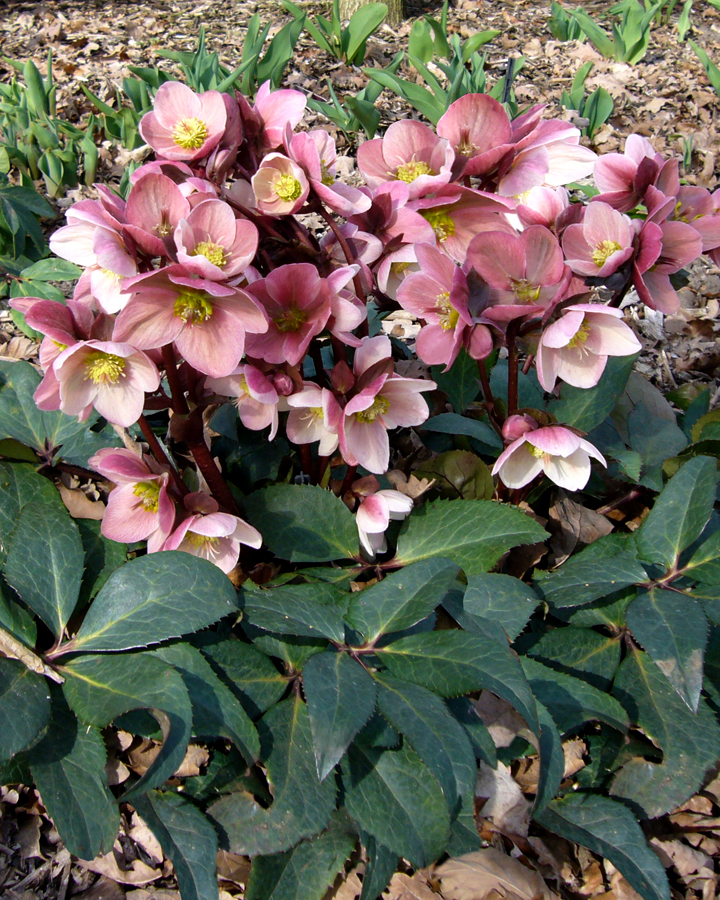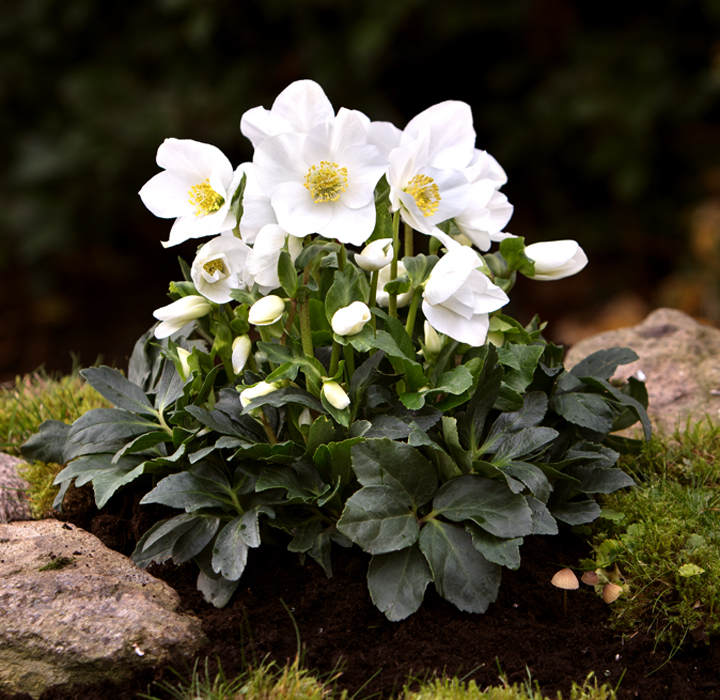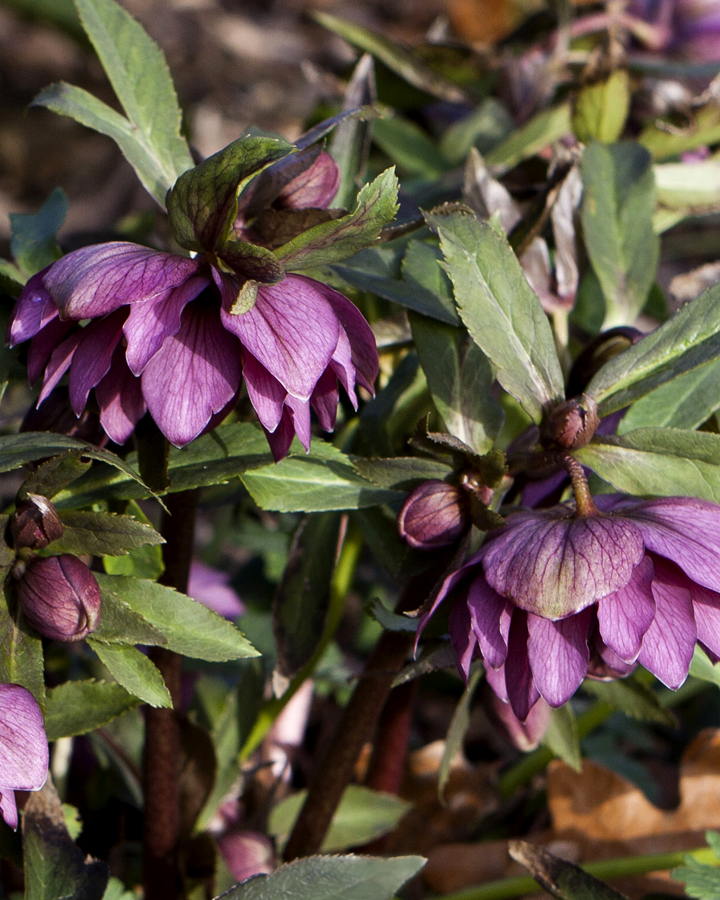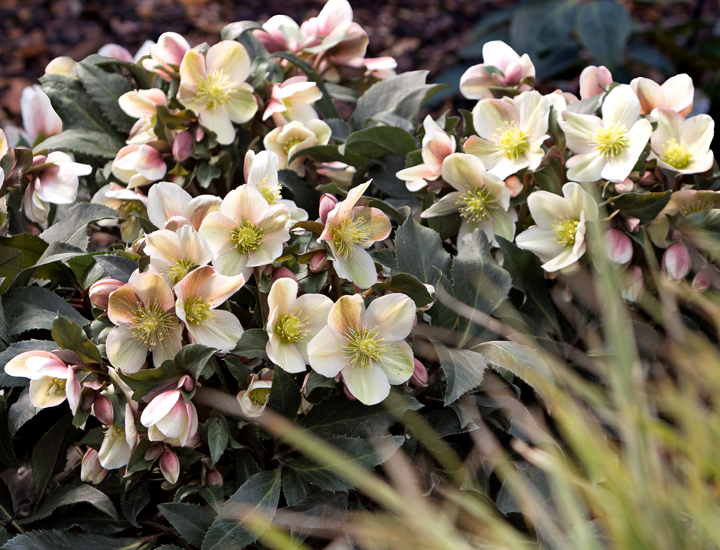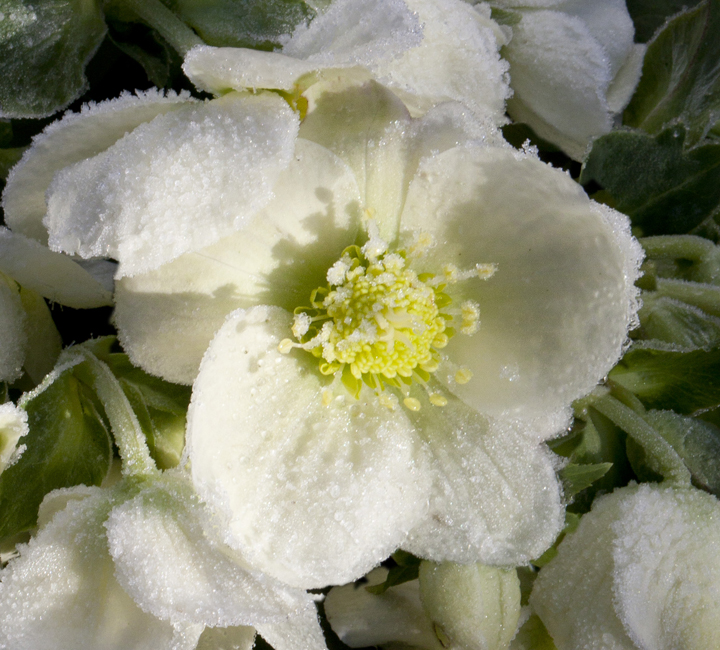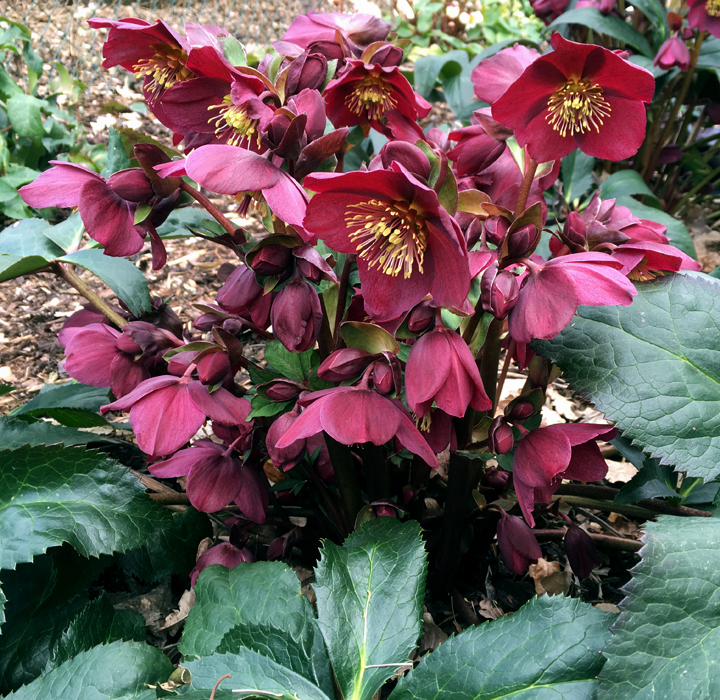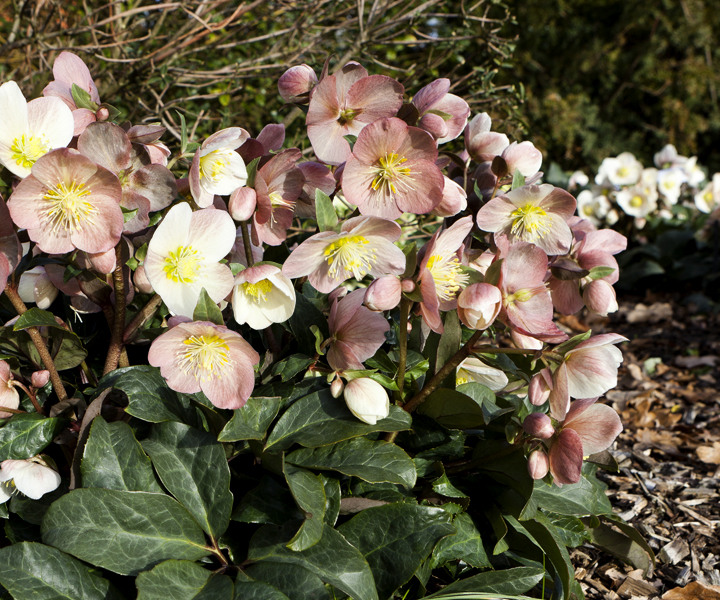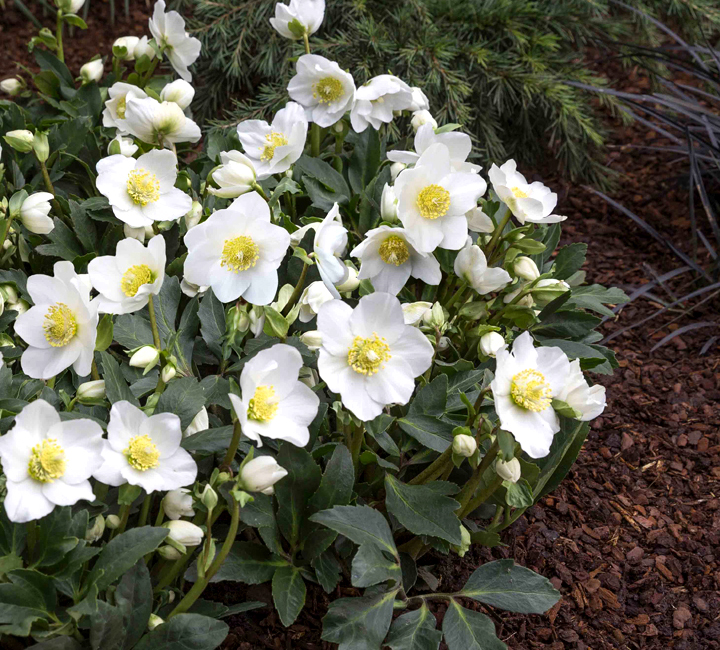WEALTH OF BEAUTIFUL FLOWERS FOR THE GARDEN IN THE MIDST OF WINTER
Due in particular to the special time at which they flower in winter and spring, Helleborus varieties are very popular for garden use. When most other plants seem to be still asleep, hellebores make their charming appearance in the flower bed. From late October onwards, the first Christmas Roses show their pure white flowers. Rose and cream-coloured Snow Roses start to flower from December onwards, followed by colourful Lenten Roses between February and April. The multitude of colours and shapes make Lenten Roses especially interesting for garden use. They look their best when combined with early-flowering perennials (e.g. lungwort [Pulmonaria] or wood anemone [Anemone nemorosa]) and tuber and bulb flowers (e.g. winter aconites [Eranthis], snowdrops [Galanthus], grape hyacinths [Muscari] and daffodils [Narcissus]). Throughout the summer, the Helleborus varieties serve as attractive ornamental foliage plants with large, leathery leaves.
Christmas Roses and Lenten Roses love a place in partial shade or shade and are therefore ideal for underplanting trees and shrubs. Snow Roses do well in sunny locations in the garden. All varieties from the Helleborus Gold Collection® are robust and easy to grow. If planted in the right spot, they grow more gorgeous every year.
LOCATION
Snow Roses also thrive in a sunny place. Christmas Roses and Lenten Roses prefer the shade or partial shade of trees or shrubs and, above all, appreciate being protected from the blazing midday sun during the summer months. By contrast, the mild winter sun doesn't bother them.
If you don't want to go without a Christmas Rose in your garden when all shady places are already occupied, you are recommended to plant deciduous shrubs or trees in the vicinity of the Christmas Rose. These plants will soon provide the partial shade that is ideal for Christmas Roses and Lenten Roses.
SOIL
Christmas Roses require little care in the garden and prefer rich and chalky soils, but – just like Snow Roses and Lenten Roses – will also thrive well in other locations that are not prone to waterlogging.
You can improve very light and sandy soils by working in some bark humus, Dolomite lime and horn shavings. Instead of Dolomite lime, you can also use crushed eggshells. In the garden, hellebores appreciate lasting companions such as perennials that do not spread excessively and, like hellebores, do not crowd adjacent plants.
CARE
Removing dead flowers from hellebores is normally not necessary during the flowering season, because the slightly pink or green tones the flowers take on as they fade actually extend the winter flowering season. However, dead flowers should be removed before the plants spread out their new leaves in spring.
Brown or damaged leaves may be removed throughout the year to prevent fungal diseases. With Lenten Roses, it is also recommendable to remove all leaves before the plants start to flower in December and January (when budding stems are approximately 10 cm in height).
Make sure to provide adequate water supply, especially after planting, because the plants need some time to extend their roots into the surrounding soil.
STEP-BY-STEP PLANTING GUIDE
Helleborus can be planted any time when the ground is not frozen. September and October, when the plants are not in flower, is a good time. Avoid planting them in summer, when the ground can be too dry. For optimum presentation, plant the perennials in groups of three to five or combine them with early spring flowers.
Step 1
Das Pflanzloch sollte so ausgehoben werden, dass es mindestens die doppelte Größe des Dig a hole approximately double the size of the current root ball to allow new roots to spread out unhindered. Loosen the soil at the bottom of the hole to a good depth.

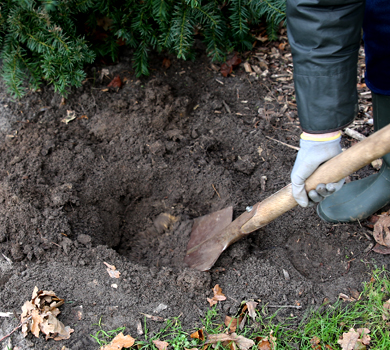
Step 2
Remove the plant from its pot. Immerse the root ball in water to make sure it is sufficiently moist.


Step 3
Plant the hellebore so that the top of the root ball is lightly covered with soil and use your hands to form a small circular ridge around the edge for improved water retention.


Step 4
Water the plant in after planting. After planting, take special care that there is an adequate supply of water. Christmas, Snow and Lenten Roses should never be allowed to get completely dry.


PLANTING DISTANCE
Space Snow Roses and Spring Promise® Lenten Roses approximately 60-80 cm apart, because the plants will grow strongly in their second year and require more space.
Christmas Roses are slightly more compact and slower growing. They only require approximately 30-50 cm of spacing.
The new Ice N' Roses® Snow Roses need plenty of space and should be planted at a minimum distance of 80 cm from each other or any other plant.

